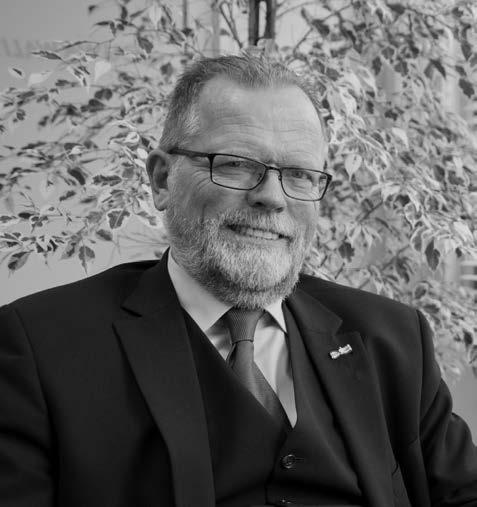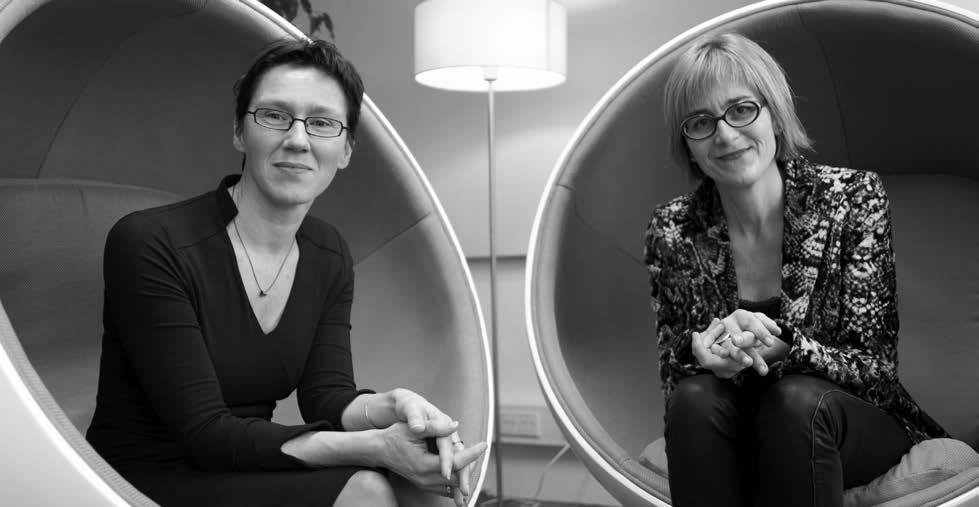
6 minute read
Healthcare institutions in transition Towards less regulation
A talk with Cordula Wagner, professor in patient safety
Dutch healthcare is highly regarded worldwide. In the annual survey of Health Consumer Powerhouse the healthcare in our country is consistently among the best in Europe. ‘First come the Dutch, then nothing and only after that Switzerland and seven other countries,’ according to the survey manager Arne Björnberg (2014). But there are regularly very critical noises in the media. Cordula Wagner, professor in patient safety, shares her thoughts about quality and safety in long-term care.
What does trust mean?
In the first place the people should be able to assume that care providers are properly trained and that they are motivated. Then, that they are enabled to do their work as a team in a professional environment with the right materials. But despite this type of precondition, sometimes things can go wrong. After all, it remains a work of man and people make mistakes. That is why it is also important that professionals work continuously with each other on quality improvement. That they regularly have discussions with each other in order to put on the table what goes and what does not go well, and that, if necessary, they have the courage to address each other on something. Basic quality and safety must be guaranteed everywhere. The people should be able to trust this blindly.
Dutch healthcare is of a high level, certainly in hospitals. Also the fact that in the Netherlands we provide for instance comprehensive long-term care – something that is not at all so matter of course in many countries – obviously says something. We are sometimes very critical. This is not wrong in itself because it prompts healthcare institutions to perform even better. But we should realise that we cannot make healthcare completely free of incidents. Even though we organise everything so well and even though healthcare provid- ers do their utmost: mistakes will be made. It is important that this awareness is widely appreciated.
Shaping quality
In recent years in the healthcare sector a lot of attention has been paid to the development of quality systems. In the meantime those systems have proved their added value. Rules and protocols, for instance in the form of checklists, can offer good support to decision-making processes or carrying out certain acts. You should not go too far in doing this. Especially after incidents the call is often heard for more regulation. But at a certain moment you reach the boundary of what you can achieve via rules and protocols. It is important that you create sufficient scope for the human dimension: that healthcare providers obtain the opportunity to draw on their knowledge, experience and creativity. It is here that the right balance should be found. In this way there is increasingly more attention to the question: how can we better respond to the requirements and needs of clients? Because apart from that task-oriented side particularly involving the medical and caring part, quality of life obviously plays a major role – and certainly in long-term care. This means that you are going to assess what each client needs and that you are accommodating this in the usual contact moments. This actual attention cannot be incorporated into rules and protocols. It requires flexibility and creativity, emotive choices. Would you not let someone with mobility problems go outside any longer because the risk of falling is greater? Or do you nevertheless grant him that walk through the garden because you know it contributes to his happiness? These are sometimes serious dilemmas, especially when you realise that society is watching critically. That is why Verpleegkundigen & Verzorgenden Nederland established the Proeftuinen Ouderenzorg (varied long-term care for the elderly). It is a project whereby healthcare providers gain insight via learning processes into the question of how they can compose their teams optimally so that they can offer their clients the best care. You notice that this creates new energy to search together for good solutions from different expertise levels and disciplines.
Measurable as well as noticeable quality
In recent years there has been too much emphasis on rules and protocols. We like being able to make mat- ters demonstrable, being able to render account. This focuses our attention particularly on measurable quality: the hard figures. But noticeable quality, based on sensory perception is at least as important: what do we feel, see, hear or smell when we walk around in a healthcare institution? This noticeable quality cannot be measured. You rely on soft signals, which you obtain for instance via mirror talks between healthcare providers and clients. Luckily, initiatives are being taken more and more often to include this aspect of quality in the evaluation of care and thereby release the rules and protocols somewhat. In this way we slowly but surely shift from the red-tape phase to the proactive phase, in which we are searching specifically for ways to accommodate the requirements and needs of clients.
This development requires a different direction, a different way of working – for individuals, teams and organisations. High reliability organisations prove that it works very well to have the right to decide and discretionary power at a de-central level. Thereby healthcare providers are given the opportunity to operate under their own management based on their professional involvement with the client within the larger framework of the institution. And also to reflect periodically on this with each other: did we indeed succeed in achieving the highest attainable in every situation? Have we not overlooked anything? Once that process is running properly, it means continuously learning and improving.
Certification in healthcare
A certificate offers a type of basic guarantee that the organisation is internally in order. It means that the arrangement is properly thought out, also with regard to the question of how the processes can run optimally. We can be confident that work is carried out with due care because sufficient guarantees are incorporated. Contrary to what is often thought, a healthcare certificate does not say anything about the outcomes. So it does not guarantee that everything is going well. In this case a certificate is a means, not an end. It ensures that healthcare providers continue to think in practice about opportunities for improvement. This is the added value.
The danger of certification is that it ends up in overregulation whereby too much emphasis is placed on rendering account. Therefore in the HKZ sphere too we are concerned with the question: how can we release measurable quality a little more and emphasise the noticeable quality a little more? If you incorporate this in your schemes, you send the organisations sooner into that direction. This is what we are now discussing. It also means that certification bodies have to implement a renovation effort whereby they will look for soft signals more. You don’t get a feel for this right away. But if you visit many healthcare institutions, at a certain stage you will get a feel for it. Many years ago an instrument was developed in America on the basis of talks with experienced inspectors of nursing and residential care homes. In their assessment they also appeared to pay attention to things like: are the corridors tidy, does it smell of urine, is the contact between a healthcare provider and a client personal, is a room cosy? Such elements can give a good image of the noticeable quality in a healthcare institution. But obviously you have to consider whether this can be standardised in a certain way.
Major opportunities for improvement
I think that at the moment there is really an overkill of rules and protocols. It can be seen everywhere in our society, in forms, checklists, guidelines etc. Ten years ago it was quite different. We have become used to nailing everything down tight. Together we created a false sense of security. The challenge is now to break it open again. This applies to all links in the chain, from the top to the bottom. Because if tighter requirements are not continuously imposed via indicators, this is reflected in the quality system of an organisation and in the translation of that system into the workplace. Healthcare providers will be given more scope to act autonomously on the basis of their involvement with the client. To put time and energy into accommodating requirements and needs: this is noticeable quality. Because in the end this is what the healthcare institution is intended for.
Cordula Wagner works as professor in patient safety for the VU MC and the EMGO Institute for Health and Care Research. She works as a Quality and Organisation programme manager for the Netherlands Institute for Health Services Research (‘NIVEL’). Since 2014 she has been chairman of the HKZ Central College of Experts. Due to her leading role in the area of patient safety in hospitals she recently received the NVZ medal.




